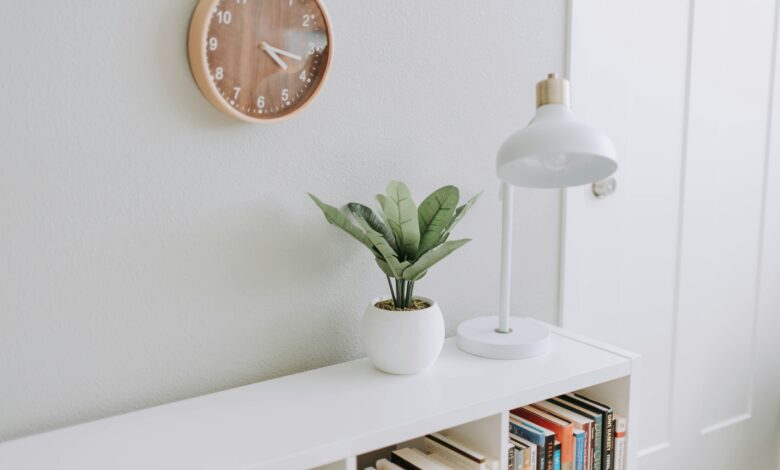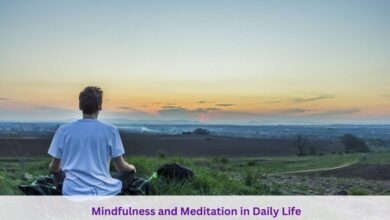Minimalism and the Art of Living with Less: A Path to Freedom, Fulfillment, and Sustainability

In a world that constantly bombards us with advertisements, social media influencers, and societal pressures to acquire more, the concept of minimalism has emerged as a refreshing antidote. Minimalism is not just a design aesthetic or a trend; it is a philosophy, a way of life that encourages us to live with less and focus on what truly matters. This article delves deep into the art of living with less, exploring its origins, benefits, and practical steps to embrace minimalism in your daily life. By the end, you’ll understand why minimalism is more than just decluttering—it’s a transformative journey toward freedom, fulfillment, and sustainability.
What is Minimalism? A Definition Beyond Possessions
Minimalism is often misunderstood as merely owning fewer things or living in a stark, empty space. While de-cluttering is a part of it, minimalism is fundamentally about intentionality. It’s about making conscious choices to prioritize what adds value to your life and letting go of what doesn’t. As Joshua Becker, a prominent minimalist, puts it, “Minimalism is the intentional promotion of the things we most value and the removal of everything that distracts us from it.”
At its core, minimalism is about:
- Simplifying your life by reducing physical, mental, and emotional clutter.
- Focusing on experiences and relationships rather than material possessions.
- Creating space for what truly matters—whether it’s time, creativity, or personal growth.
The Origins of Minimalism: A Historical Perspective
Minimalism isn’t a new concept. Its roots can be traced back to various philosophical and cultural traditions:
- Ancient Philosophies: Stoicism, practiced by thinkers like Marcus Aurelius and Epictetus, emphasized the importance of self-control, simplicity, and focusing on what is within our control.
- Eastern Traditions: Buddhism and Taoism advocate for detachment from material possessions and a focus on inner peace and mindfulness.
- Modern Minimalism: The minimalist movement gained traction in the 20th century, influenced by artists like Donald Judd and architects like Ludwig Mies van der Rohe, who championed the idea of “less is more.”
Today, minimalism has evolved into a lifestyle movement, popularized by figures like Marie Kondo, The Minimalists (Joshua Fields Millburn and Ryan Nicodemus), and Fumio Sasaki.
Why Minimalism Matters: The Benefits of Living with Less
Living with less isn’t just about having a tidy home; it’s about transforming your life. Here are some of the profound benefits of embracing minimalism:
1. Freedom from Consumerism
Consumer culture thrives on making us believe that happiness comes from owning more. Minimalism challenges this notion by showing us that true freedom lies in detaching from the endless cycle of buying and accumulating. When you stop chasing material possessions, you free up time, energy, and resources to focus on what truly matters.
2. Reduced Stress and Anxiety
Clutter—whether physical, digital, or mental—can be overwhelming. Studies have shown that a cluttered environment increases stress levels and reduces productivity. By simplifying your surroundings, you create a calmer, more peaceful space that promotes mental clarity and well-being.
3. Financial Freedom
Minimalism encourages mindful spending. When you stop buying unnecessary items, you save money, pay off debt, and invest in experiences that bring lasting joy. This financial freedom allows you to live more intentionally and pursue your passions.
4. Environmental Sustainability
The minimalist lifestyle aligns with sustainable living. By consuming less, you reduce waste, lower your carbon footprint, and contribute to the preservation of the planet. Minimalism is a small but powerful step toward combating climate change and promoting eco-friendly practices.
5. Deeper Connections
When you’re not preoccupied with material possessions, you have more time and energy to nurture relationships. Minimalism fosters deeper connections with family, friends, and yourself.
6. Personal Growth and Fulfillment
Minimalism creates space for self-reflection and personal growth. By eliminating distractions, you can focus on your goals, passions, and values, leading to a more fulfilling and purposeful life.
The Art of Living with Less: Practical Steps to Embrace Minimalism
Embracing minimalism is a journey, not a destination. Here are some practical steps to help you get started:
1. Declutter Your Space
Begin by decluttering your home. Use the KonMari method by Marie Kondo: ask yourself if each item sparks joy. If it doesn’t, thank it for its service and let it go. Start with one area at a time—your closet, kitchen, or workspace—and gradually move through your entire home.
2. Adopt a One-In, One-Out Rule
To prevent clutter from creeping back in, adopt a one-in, one-out rule. For every new item you bring into your home, let go of an old one. This practice encourages mindful consumption and helps maintain a minimalist lifestyle.
3. Simplify Your Digital Life
Digital clutter can be just as overwhelming as physical clutter. Unsubscribe from unnecessary emails, delete unused apps, and organize your files. Set boundaries for screen time to create a healthier relationship with technology.
4. Focus on Quality Over Quantity
When you do need to purchase something, prioritize quality over quantity. Invest in well-made, durable items that will last longer and serve you better. This approach not only saves money in the long run but also reduces waste.
5. Practice Mindful Spending
Before making a purchase, ask yourself:
- Do I really need this?
- Will it add value to my life?
- Can I afford it without stress?
Mindful spending helps you avoid impulse buys and align your purchases with your values.
6. Let Go of Emotional Clutter
Minimalism isn’t just about physical possessions; it’s also about letting go of emotional baggage. Practice forgiveness, release grudges, and focus on the present moment. Mindfulness and meditation can be powerful tools in this process.
7. Create a Capsule Wardrobe
A capsule wardrobe is a curated collection of versatile, timeless clothing items that can be mixed and matched. This simplifies your daily routine, reduces decision fatigue, and ensures that you always have something to wear.
8. Embrace Experiences Over Things
Shift your focus from acquiring things to creating memories. Spend time with loved ones, explore new hobbies, and travel to new places. Experiences bring more lasting happiness than material possessions.
9. Set Boundaries
Learn to say no to commitments, possessions, and activities that don’t align with your values. Setting boundaries is essential for maintaining a minimalist lifestyle and protecting your time and energy.
10. Reflect and Reassess
Minimalism is a continuous process. Regularly reflect on your journey and reassess your priorities. As your life evolves, so will your definition of minimalism.
Minimalism in Different Areas of Life
Minimalism isn’t limited to your physical space; it can be applied to various aspects of your life:
1. Minimalist Work Habits
- Prioritize tasks and focus on what truly matters.
- Limit distractions by creating a clean, organized workspace.
- Set boundaries to maintain a healthy work-life balance.
2. Minimalist Relationships
- Surround yourself with people who uplift and inspire you.
- Let go of toxic relationships that drain your energy.
- Invest time in nurturing meaningful connections.
3. Minimalist Finances
- Create a budget and stick to it.
- Avoid unnecessary debt and save for the future.
- Spend money on experiences and investments that align with your values.
4. Minimalist Health
- Simplify your diet by focusing on whole, nutritious foods.
- Incorporate regular exercise and mindfulness practices into your routine.
- Prioritize sleep and self-care.
Common Misconceptions About Minimalism
Despite its growing popularity, minimalism is often misunderstood. Here are some common misconceptions debunked:
1. Minimalism Means Living with Nothing
Minimalism isn’t about deprivation; it’s about intentionality. You can still own things, but they should add value to your life.
2. Minimalism is Only for the Wealthy
Minimalism is accessible to everyone, regardless of income. In fact, it can help you save money and live more sustainably.
3. Minimalism is a One-Size-Fits-All Approach
Minimalism looks different for everyone. It’s about finding what works for you and aligning your lifestyle with your values.
The Future of Minimalism: A Sustainable and Fulfilling Lifestyle
As the world grapples with environmental challenges, economic inequality, and mental health crises, minimalism offers a path forward. It’s a lifestyle that promotes sustainability, mindfulness, and intentional living. By embracing minimalism, we can create a better future for ourselves and the planet.
Conclusion: The Transformative Power of Minimalism
Minimalism is more than just a trend; it’s a powerful tool for transforming your life. By living with less, you can free yourself from the burdens of consumerism, reduce stress, and focus on what truly matters. Whether you’re just starting your minimalist journey or have been practicing it for years, remember that minimalism is a personal and evolving process. It’s about creating a life filled with purpose, joy, and freedom—one intentional choice at a time.
So, take a deep breath, let go of what no longer serves you, and embrace the art of living with less. Your journey to a simpler, more fulfilling life starts now.


